Notice
Please be aware that Hestercombe will be closed on Christmas Day and Boxing Day, but will be open daily throughout the rest of the Christmas holidays.
Please be aware that Hestercombe will be closed on Christmas Day and Boxing Day, but will be open daily throughout the rest of the Christmas holidays.
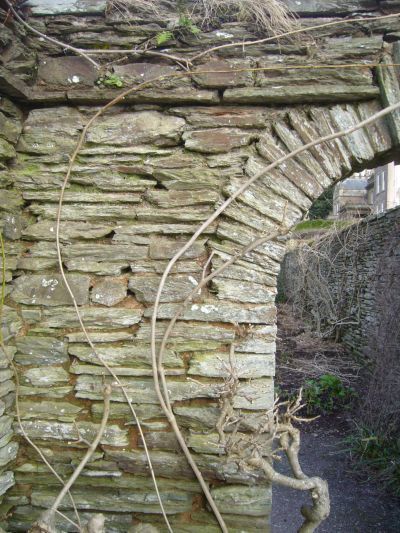
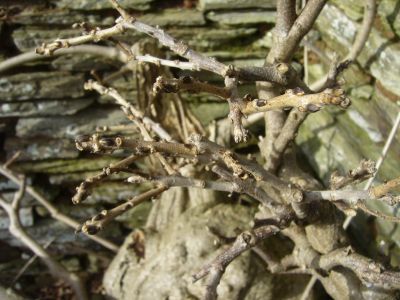 Above left: Young Wisteria stems tied into place. Above right: Wisteria spurs will hopefully produce lots of flowers!
Above left: Young Wisteria stems tied into place. Above right: Wisteria spurs will hopefully produce lots of flowers!
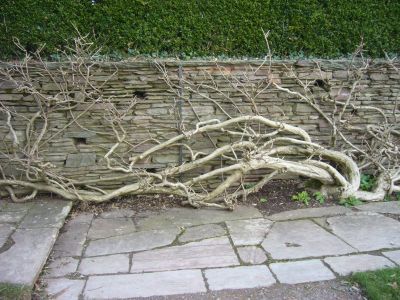 Above: Before and after pruning.
Ficus carica (Fig) - You will normally see figs grown as shrubs, small trees or fan trained against a wall, but at Hestercombe our figs are grown slightly differently. This is because we are growing them for the leafy foliage rather than for the fruit. The figs are grown against the walls of the Formal Garden and the stems go straight up (instead of going diagonally or horizontally as they would for a fan trained fig). The new growth is then pruned back to about four buds and any new stems are tied in, see below.
Above: Before and after pruning.
Ficus carica (Fig) - You will normally see figs grown as shrubs, small trees or fan trained against a wall, but at Hestercombe our figs are grown slightly differently. This is because we are growing them for the leafy foliage rather than for the fruit. The figs are grown against the walls of the Formal Garden and the stems go straight up (instead of going diagonally or horizontally as they would for a fan trained fig). The new growth is then pruned back to about four buds and any new stems are tied in, see below.
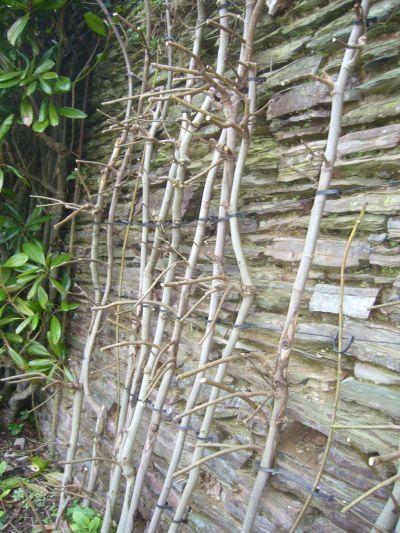 Apple trees - The orchard below the Formal Garden had some new additions last spring. Some of the old trees were removed and replaced with young trees. The orchard now boasts a range of spur-bearing, tip-bearing and cider apples. The spur-bearers we have include 'Charles Ross' (see photo), 'Golden Pippin' and 'Egremont Russet'. We prune all the laterals (or sideshoots) back to three or four buds, whilst the leader of each branch is just cut back by about one third. The general shape of the tree should resemble a goblet by having an open centre. We also have some partial tip-bearers including 'Blenheim Orange' and 'D'arcy Spice'. The leading stem of each branch is reduced by a third and then only the laterals that are more than 30cm long are pruned back. The young cider apples, for example 'Kingston Black' will be grown as a spindle bush (or pyramid shape). In this case we shortened the leader by one third and then shortened the laterals to a downward facing bud.
Apple trees - The orchard below the Formal Garden had some new additions last spring. Some of the old trees were removed and replaced with young trees. The orchard now boasts a range of spur-bearing, tip-bearing and cider apples. The spur-bearers we have include 'Charles Ross' (see photo), 'Golden Pippin' and 'Egremont Russet'. We prune all the laterals (or sideshoots) back to three or four buds, whilst the leader of each branch is just cut back by about one third. The general shape of the tree should resemble a goblet by having an open centre. We also have some partial tip-bearers including 'Blenheim Orange' and 'D'arcy Spice'. The leading stem of each branch is reduced by a third and then only the laterals that are more than 30cm long are pruned back. The young cider apples, for example 'Kingston Black' will be grown as a spindle bush (or pyramid shape). In this case we shortened the leader by one third and then shortened the laterals to a downward facing bud.
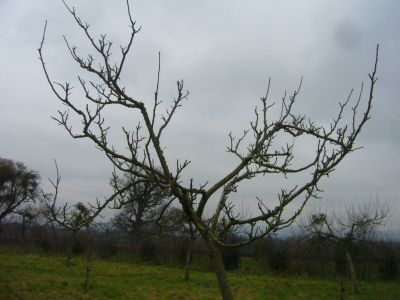 Roses - The rose pruning has only just begun, but already some of the Rosa x odorata 'Pallida' are starting to come into leaf. Generally, the number of rose stems will be reduced by about one third and the height of the remaining stems will be reduced by one third. An open centre is also needed to give good air circulation. Any fallen rose leaves should be removed from the soil surface as these can spread black spot fungus into the soil.
Roses - The rose pruning has only just begun, but already some of the Rosa x odorata 'Pallida' are starting to come into leaf. Generally, the number of rose stems will be reduced by about one third and the height of the remaining stems will be reduced by one third. An open centre is also needed to give good air circulation. Any fallen rose leaves should be removed from the soil surface as these can spread black spot fungus into the soil.
